There is a lot of pressure on us gardeners for us to mulch every inch of our gardens. It seems like every time we seek an answer to how to deal with something in the garden; the answer is always--
MULCH!
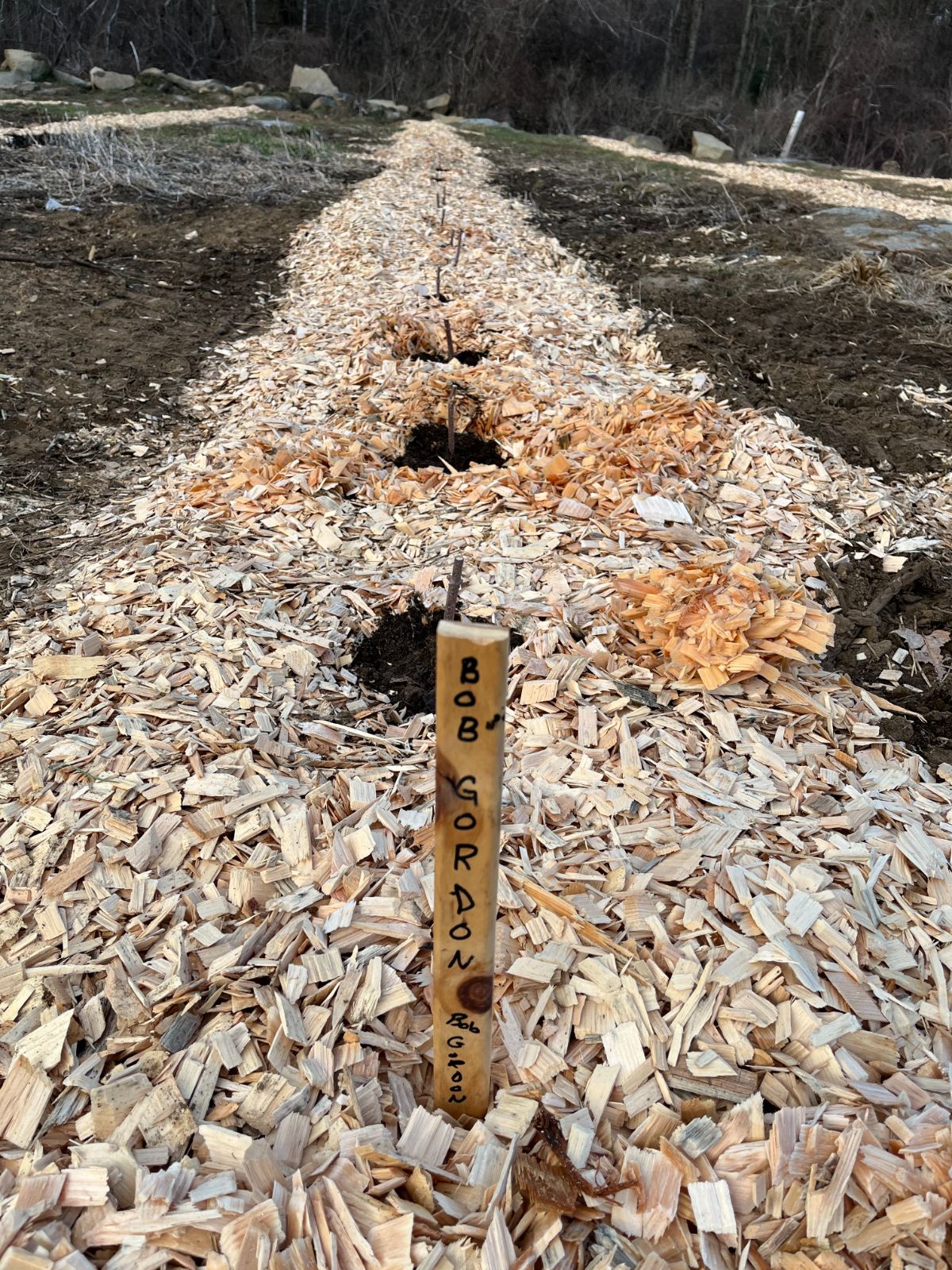
This seems especially true since the rise in popularity of no-till gardening. But mulching is not actually the answer for every garden space, and it is not a be-all-and-end-all solution.
Jump to:
- Why in the World Would You NOT Want to Mulch?
- 1. It takes time (and energy) to lay down
- 2. Gives pests a place to hide
- 3. Protects tunneling rodents
- 4. Makes some weeding methods difficult
- 5. Reduces soil aeration
- 6. May rip and tear with weeding, cultivators, or mowers
- 7. May be hard to walk on or uncomfortable to work in
- 8. May keep some plants too moist
- 9. May hold too much water
- 10. May tie up nitrogen when it breaks down
- 11. Can affect soil pH
- 12. May suffocate plants and seeds, especially if applied too thickly
- 13. May overheat soil
- 14. Can hinder water flow
- 15. May rot stems
- 16. Can limit air to soil, roots, and seeds
- 17. It’s expensive
- 18. May add extra work for fall cleanup
- 19. Can add to the problem of rubbish and waste
- Mulching is Not Inherently Good nor Evil
Why in the World Would You NOT Want to Mulch?
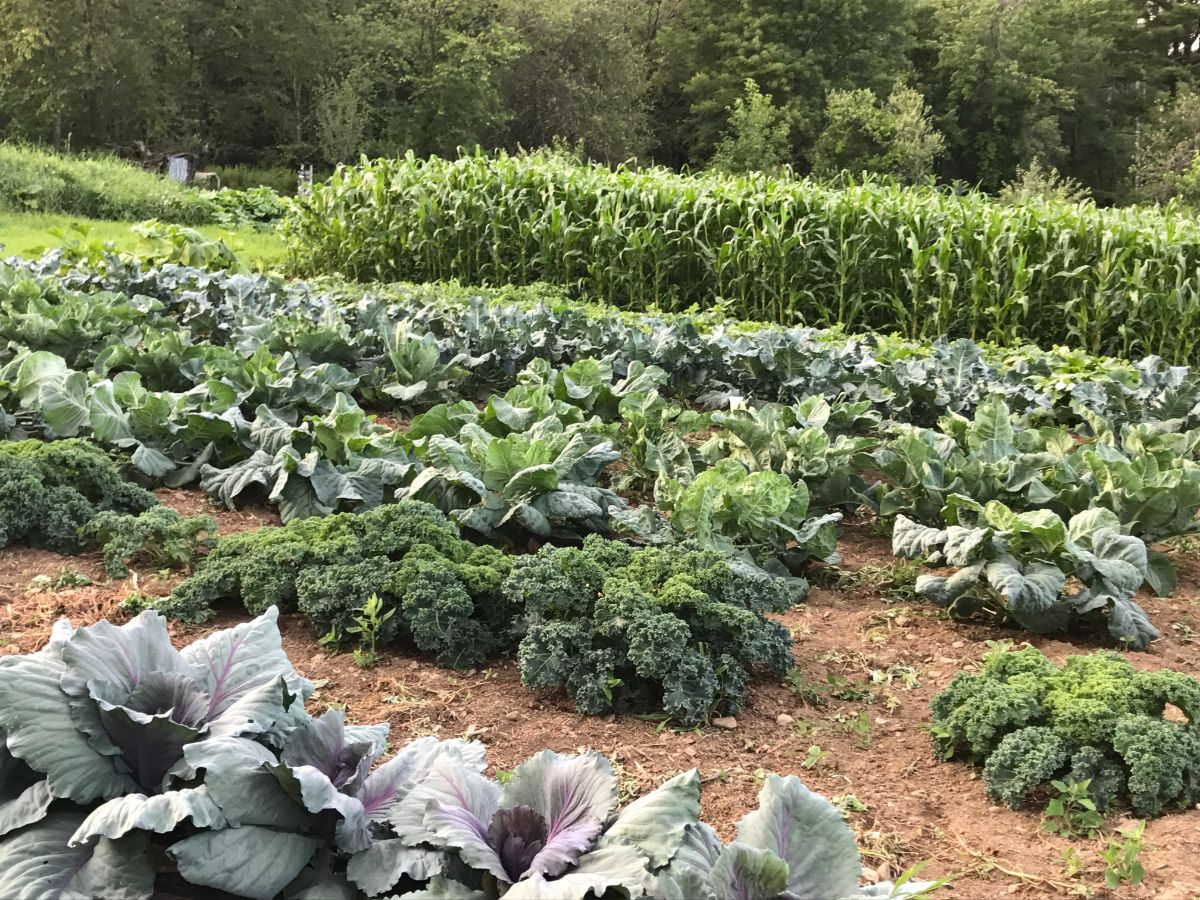
Depending on how you prefer to garden, what you’re growing, your garden conditions, and what’s going on in your garden, there may be some very good reasons for you not to mulch your flower or vegetable garden. Sometimes, mulching just gets in the way. And for some plants, it can cause more problems than it solves.
Let’s take a look at some of the reasons you may not want to mulch your garden:
1. It takes time (and energy) to lay down
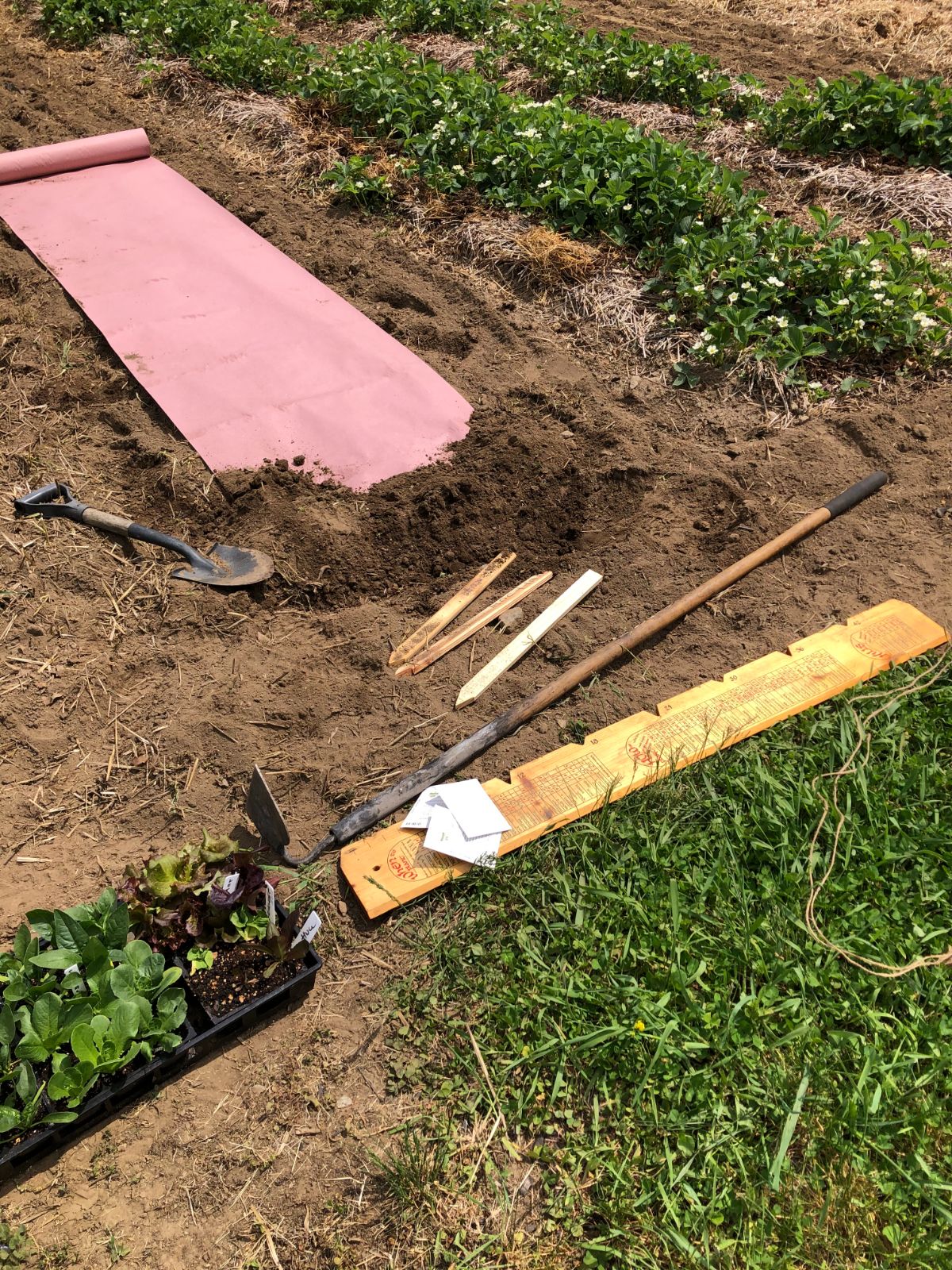
Laying down mulches and weed barriers takes a lot of time. This can make getting a garden in the ground difficult, especially during the busy spring planting season, and especially if you are laying down mulches before planting and then planting through them—those all need to be in place before a single plant can go into the ground. It multiplies the work of planting every spot, space, or row of your garden. That time can really add up.
The idea is that a weed-blocking mulch will save you time in the long run, but you may need to consider when and where you have the time to spend; it may even hinder some methods.
Oh—and it’s work. Physical work. Heavy work, sometimes. Not everyone is able to do all that bending, lifting, moving, carrying, and shoveling.
2. Gives pests a place to hide

Mulches can give bad bugs good places to hide. Slugs, in particular, love certain types of mulch (like straw) because they have a cool, moist place to hide during the day, and it is soft enough for them to climb out and feed at night. Beetles and pests that drop when you approach them can easily skitter under a loose or porous mulch layer (think cucumber beetles and asparagus beetles disappearing in wood chips or straw).
3. Protects tunneling rodents
Thick mulch layers are good cover for tunneling rodents like rats, mice, moles, and voles. You may not even know they are there until you start seeing the effects of their handiwork. Wood chips, straw, and even weed barrier fabrics make it easy for tunnelers to dig through the ground below, and they are well protected from the predators who could help you control them. A predatory bird or owl won’t be able to see rodents traveling under the cover of mulch, fabric, or plastic.
4. Makes some weeding methods difficult

Depending on how you like to control weeds in your garden, mulches and fabrics can actually get in the way. The theory with barriers is that it’s okay to have something blocking your access to your soil because it will stop weeds from coming up. But a few weeds are bound to squeeze in wherever they can.
This can be especially problematic if you are a person who likes to hoe your rows for weed control. Hoeing is a good way to control weeds. It gives you some exercise, keeps you engaged and aware of what’s going on in your garden, and your presence helps keep animals out. Hoeing a row or two a day with a garden hoe or hula hoe may be just as easy and just as fast as having to pull and weed with mulches in the way, and it may be more effective. But once you have a mulch or barrier in place, hoeing will not be possible. If you can’t hoe the row, you’ll have to bend down to pull weeds by hand. That’s not easy for everyone.
5. Reduces soil aeration
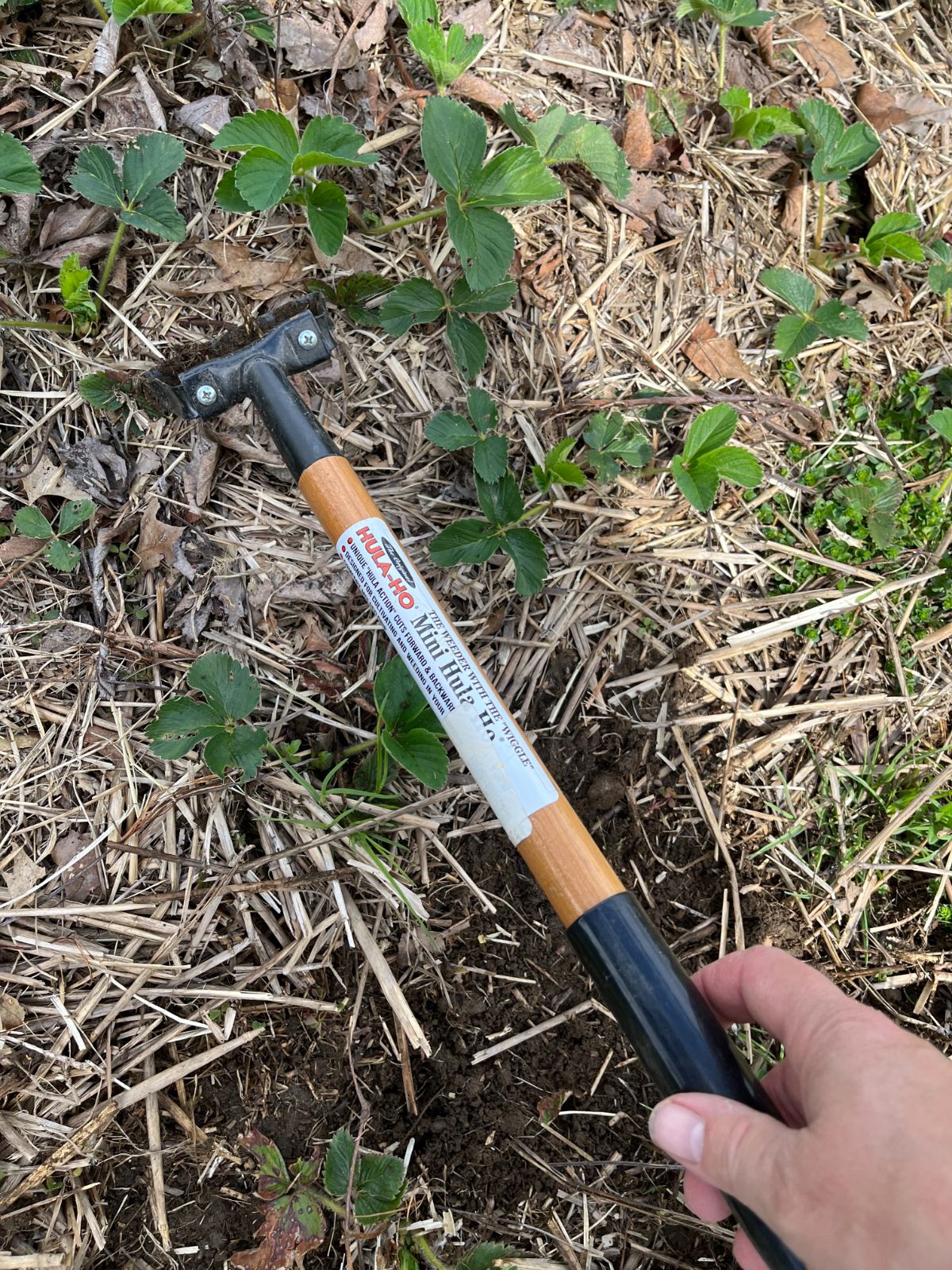
Pulling weeds, hoeing, and working the soil helps to aerate the soil. Mulched gardens aren’t worked like weeded rows are, so they don’t enjoy as good a level of aeration. For all its work, weeding is beneficial.
6. May rip and tear with weeding, cultivators, or mowers
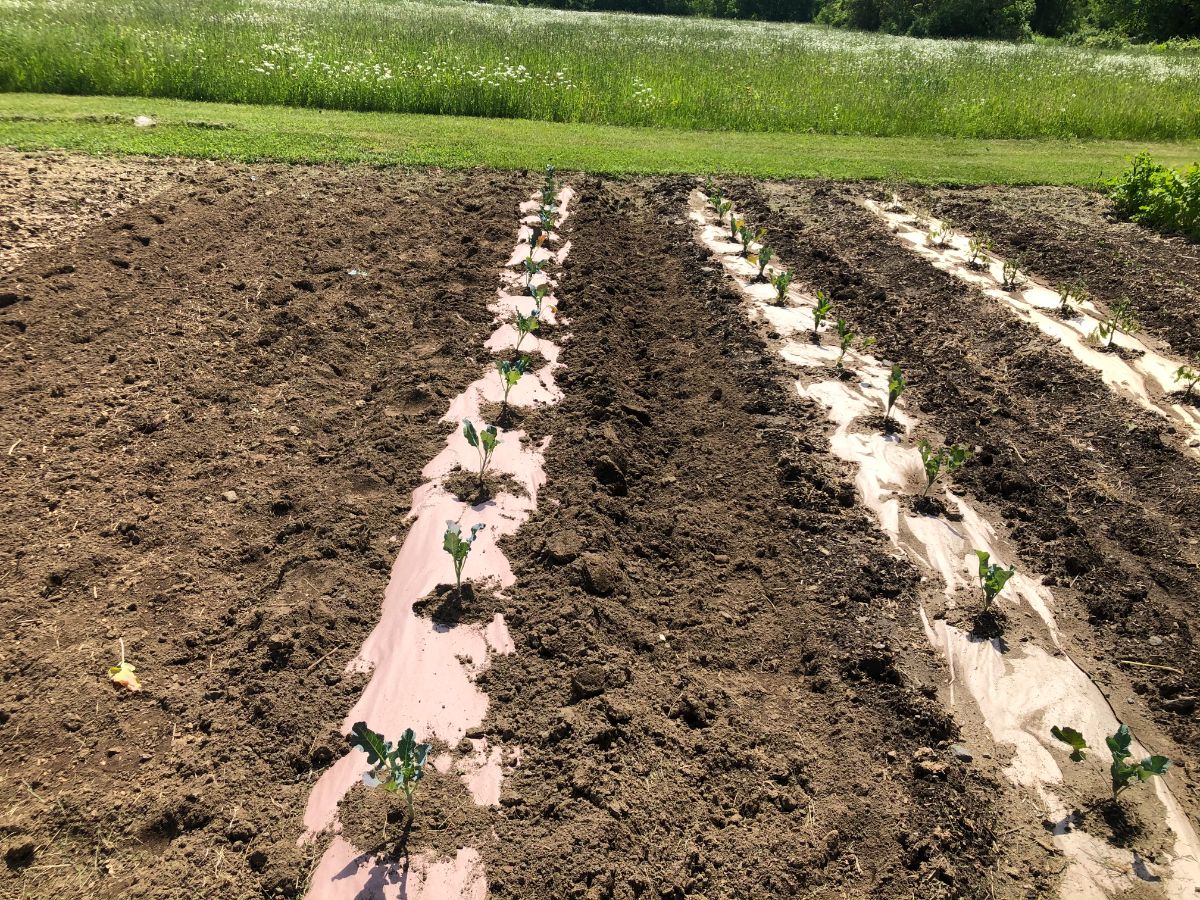
It can be very easy to tear the edges of mulches when cultivating, walking on, or mowing aisles and edges. What might have started as a nicely mulched row at the beginning of the season can whittle down to a barely effective, narrow barrier of questionable benefit.
Some barrier plastics and fabrics have small holes in them to let water penetrate to the soil. Unfortunately, weed seeds can be tiny and persistent. Sometimes they poke through and grow through the fabric, and when you pull them, they rip holes in the fabric...holes that no longer block the weeds. Eco-friendly paper weed layers sometimes rip and split under weight, like when you step on it or put a hand on it leaning over, and leave gaps for weeds to infiltrate.
7. May be hard to walk on or uncomfortable to work in
Solid plastic mulches and hard mulches like large wood chips and stone can be very uncomfortable to walk on and to work in. Plastic mulch can become very hot. All of these can make it hard to kneel down to work in your garden.
8. May keep some plants too moist
Not all plants like the extra moisture retention that mulch provides. Some plants—like a lot of your Mediterranean herbs—prefer soil that dries out in between watering. Rosemary, lavender, oregano, and marjoram are a few examples. Keeping them under a heavy layer of mulch may keep their roots too wet, and they may not thrive or may even die.
9. May hold too much water
Similarly, if you lay mulch over heavy soils that do not drain well or on wet ground, you may find that the mulch is holding too much water and keeping the ground too wet. This can also be true when you have a very rainy year or excessive rain.
Draining is one way the ground gets rid of extra water, but evaporation is, too. Ground that is covered has a hard time evaporating off moisture. This is a bigger problem in saturated soils and soils that already have a hard time draining because of their structure (such as soils that have a lot of clay in them).
10. May tie up nitrogen when it breaks down
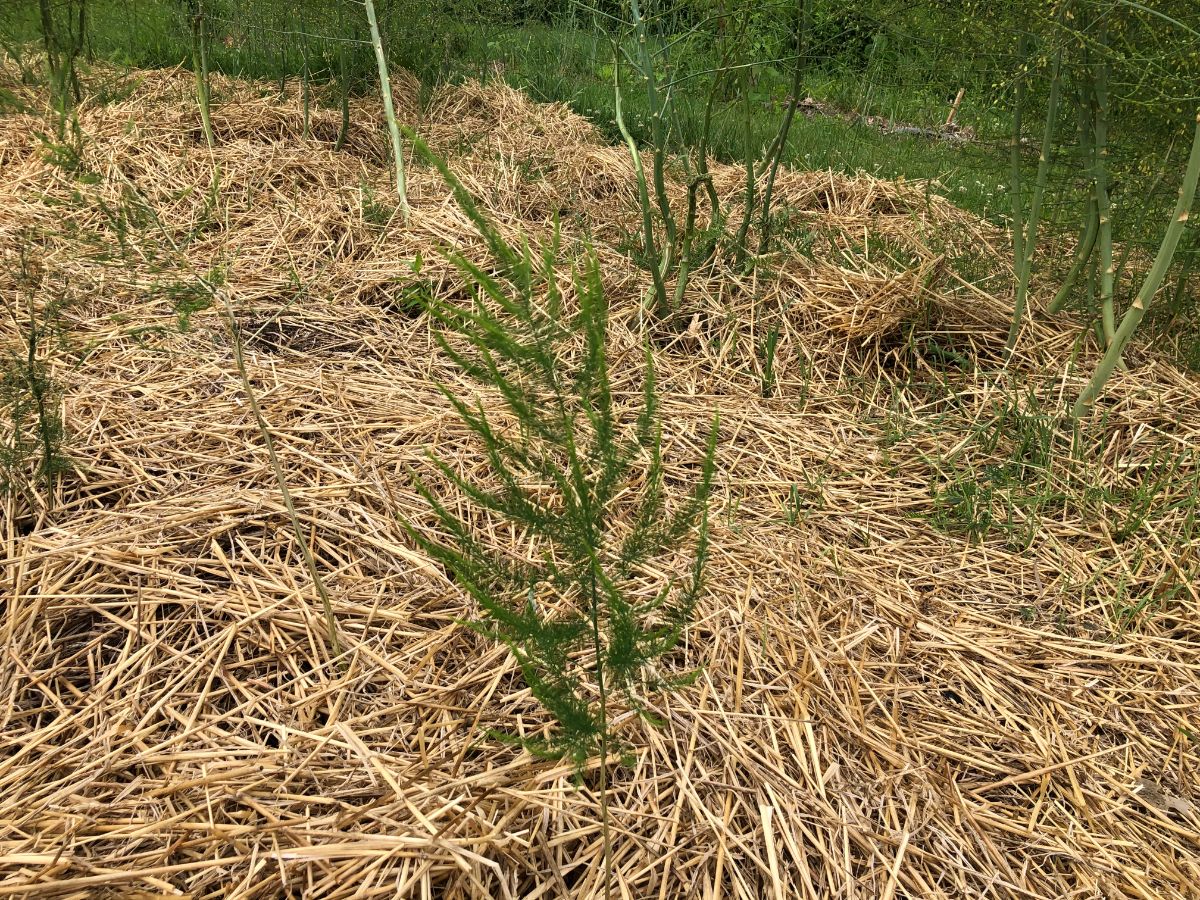
Brown and woody mulches need nitrogen to help them decompose. It’s a natural process, but one that ties up nitrogen in the soil. Nitrogen is not gone forever, it is more like it is borrowed temporarily, but it is something to consider.
This is not too much of an issue when the mulch stays on top of the soil, except for the mulch on the bottom layer that might be starting to decompose. It will be an issue when the mulch is worked into the soil—such as when it is tilled in or turned over. If that process happens over winter when you are not growing, it may not be an issue. Larger chips will break down more slowly and are more likely to be a longer-term problem.
11. Can affect soil pH
When mulches decompose and when woody mulches like pine sawdust are introduced, they can change the pH of the soil. Again, the issue is not usually permanent, and your soil will usually overcome it, but it is something to be aware of, and you may need to do more testing to know what your current soil pH level is and whether your plants can tolerate it.
12. May suffocate plants and seeds, especially if applied too thickly
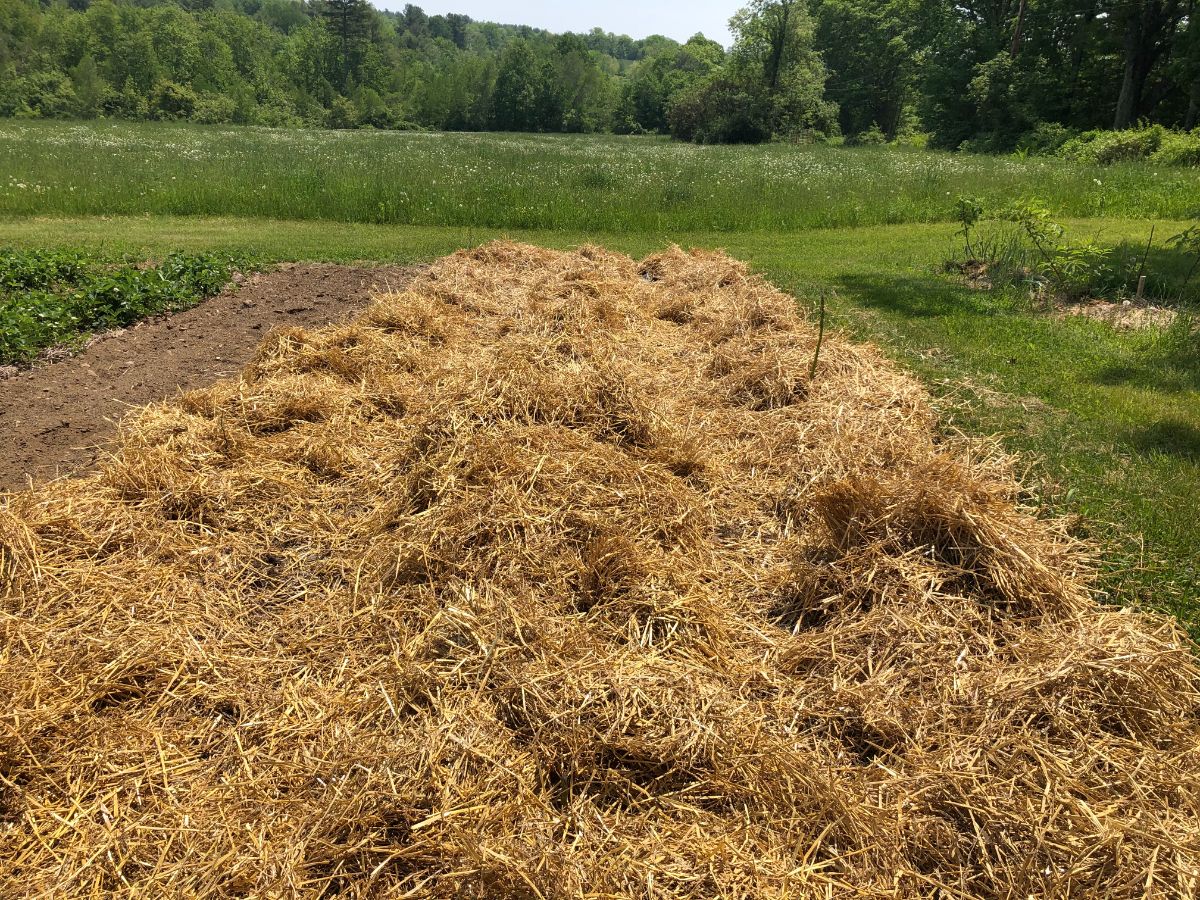
Heavy, thick mulch layers interfere with photosynthesis, which is a problem for good seed germination and the growth of small seedlings. This is something that you can work around for most plants, mostly by not applying your mulch too thickly (not more than three, and never more than four inches thick). With small transplants, you’ll need to take care not to apply the mulch too closely to the stems, or they may rot and die before they grow large enough to handle it.
If you have plants that reseed naturally (like wildflowers) and that you are counting on to do so, this can be a real problem. If you apply mulch where you already sowed a new seed, you may prevent it from ever coming up.
13. May overheat soil
Mulch that is applied too thickly (especially wood mulches) can create their own heat as they break down. They may make the soil too hot, which can cook and rot roots and kill plants. Mulch is usually considered something that helps to cool or moderate the soil, but in some cases, it is the opposite. This is, however, something that happens more with improper application, so it is mostly avoidable.
14. Can hinder water flow

Depending on how and what you use for mulch, instead of helping to keep the soil moist, it may stop water from sinking into the soil. This may be less of an issue for larger plants and bushes with wide root systems but can kill smaller plants.
Heavy plastic, especially over large expanses, or mulch that is applied too thickly can cause water to run off or not allow water to sink down into the soil. It may keep your plants too dry. Some types of mulch, like ash, stone dust, and pine needles, can make a hard shell that sheds water instead of absorbing it. These are generally fine to use when used correctly, but you do need to know how they can be applied.
15. May rot stems

Mulch that is applied and kept close to the stems of plants, bushes, and trees can cause the plants to rot. They deteriorate the stems from the outside in, cutting off their ability to move water and nutrients and kill the plants. Mulches of all types, but wood chips in particular, should be kept back several inches from the trunks of trees and stems of plants.
16. Can limit air to soil, roots, and seeds
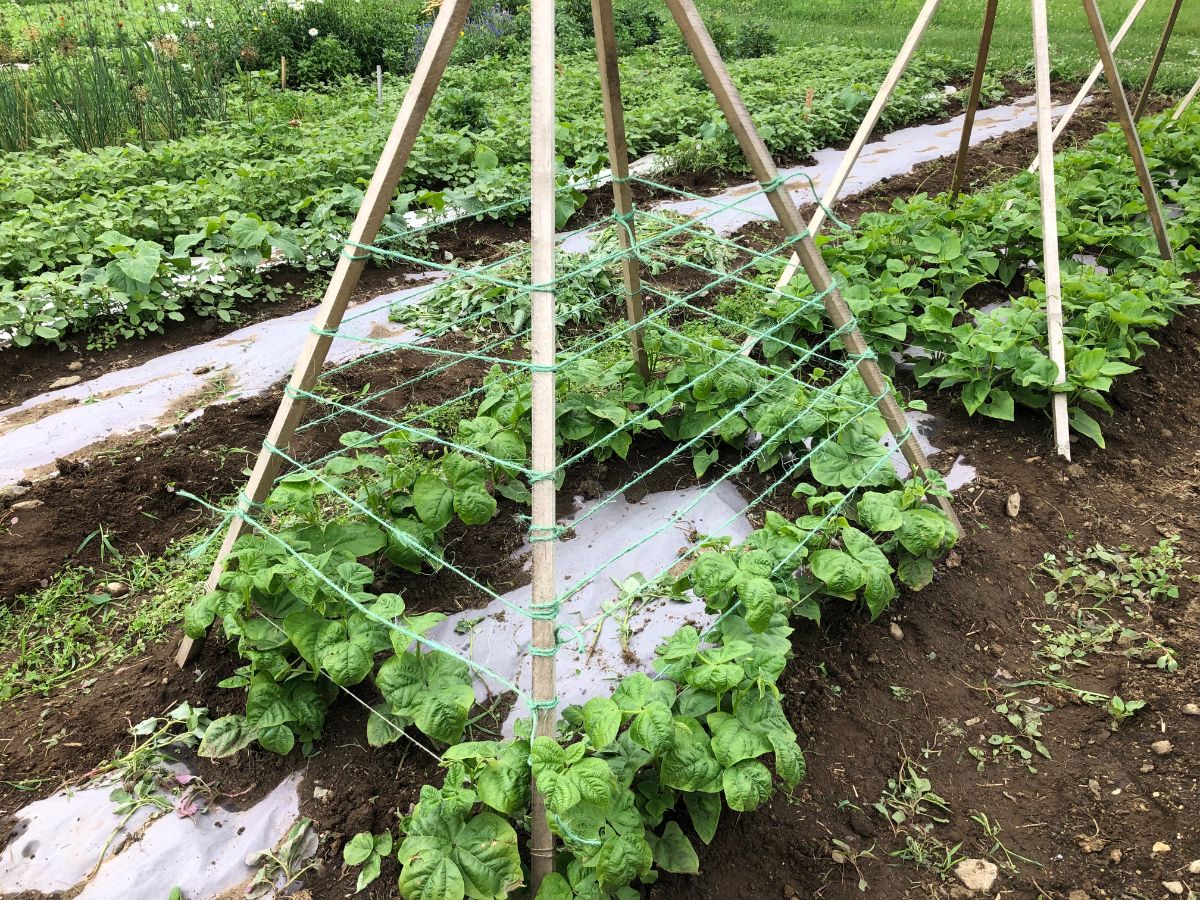
Soil that is exposed to the elements is also exposed to more air and oxygen, which it can pull in when the rain and water cycles cause expansion and contraction of the soil. Soils that are blocked with mulches and weed barriers do not have that exposure. That can limit seed germination and root growth and can contribute to root rot.
17. It’s expensive
There are some mulches, like leaf litter and pine needles, that you can get for free or inexpensively if you have a good source. Most people have to buy their weed papers, barriers, fabrics, and mulches. That’s an expense that can really add up. Mulch may reduce your workload, but at some point, especially for things like vegetable gardens where you are trying to see a return and usually want to save some money on your vegetables and produce, you may have to consider whether the expense is worth it.
18. May add extra work for fall cleanup
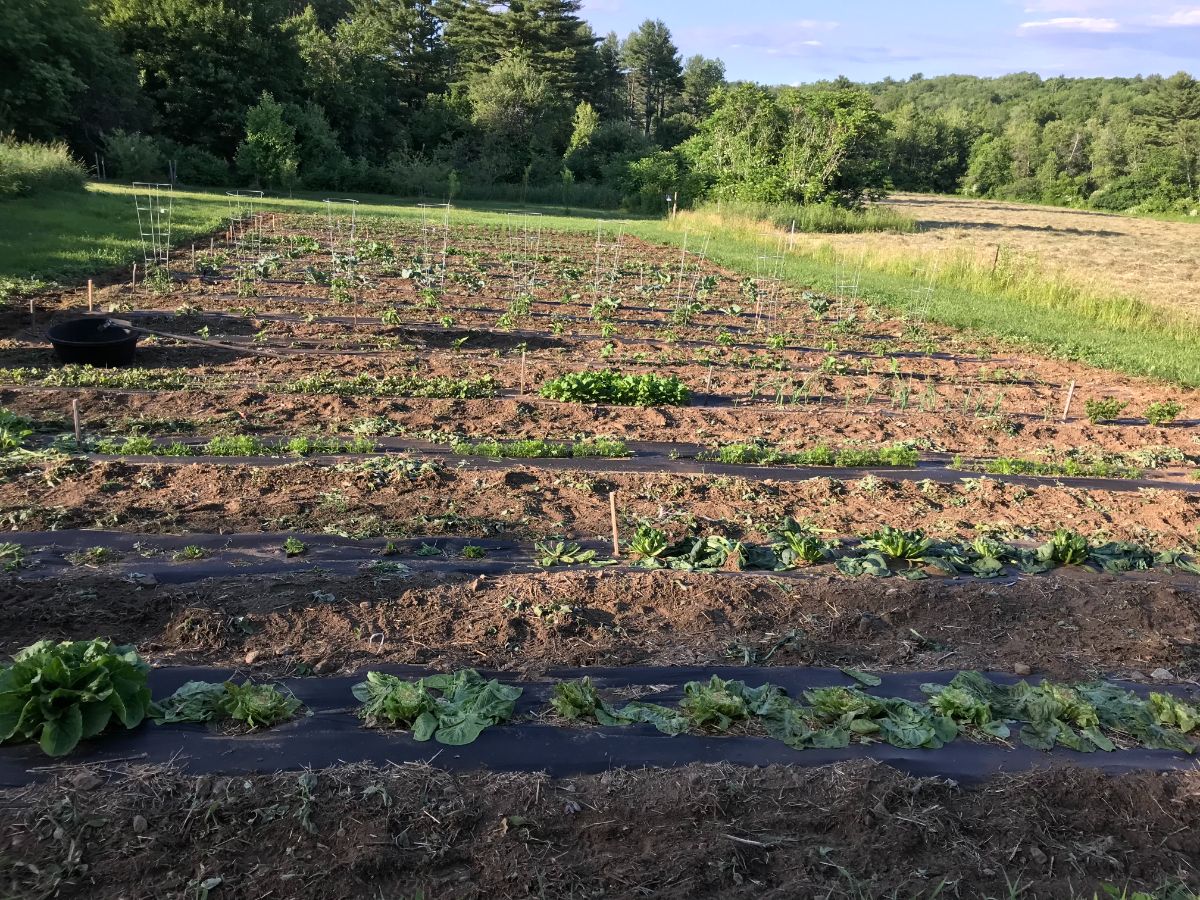
Some mulches can stay in place and will naturally break down. Some will break down but need to be incorporated into the soil to keep them from becoming refuse (an issue for paper and cardboard mulches), and some mulches will never break down (at least not in our lifetime) and will have to be removed. That can all add up to a lot more work in the fall. Add this to the work of laying the mulch in the spring and summer, and you may need to do the math to figure out if using a mulch saved you enough weeding time to make it worth it.
19. Can add to the problem of rubbish and waste
We’re talking to you, plastic mulches and weed barriers. Just because they’re not in your garden anymore doesn’t mean they don’t still exist. Depending on the plastic, it can take as long as 500 years to decompose. That’s hardly the eco-friendly greenness we want to come out of our gardens. Of course, there are many natural mulch options, but this is something to consider if plastic-based weed barriers are your go-to mulch.
Mulching is Not Inherently Good nor Evil
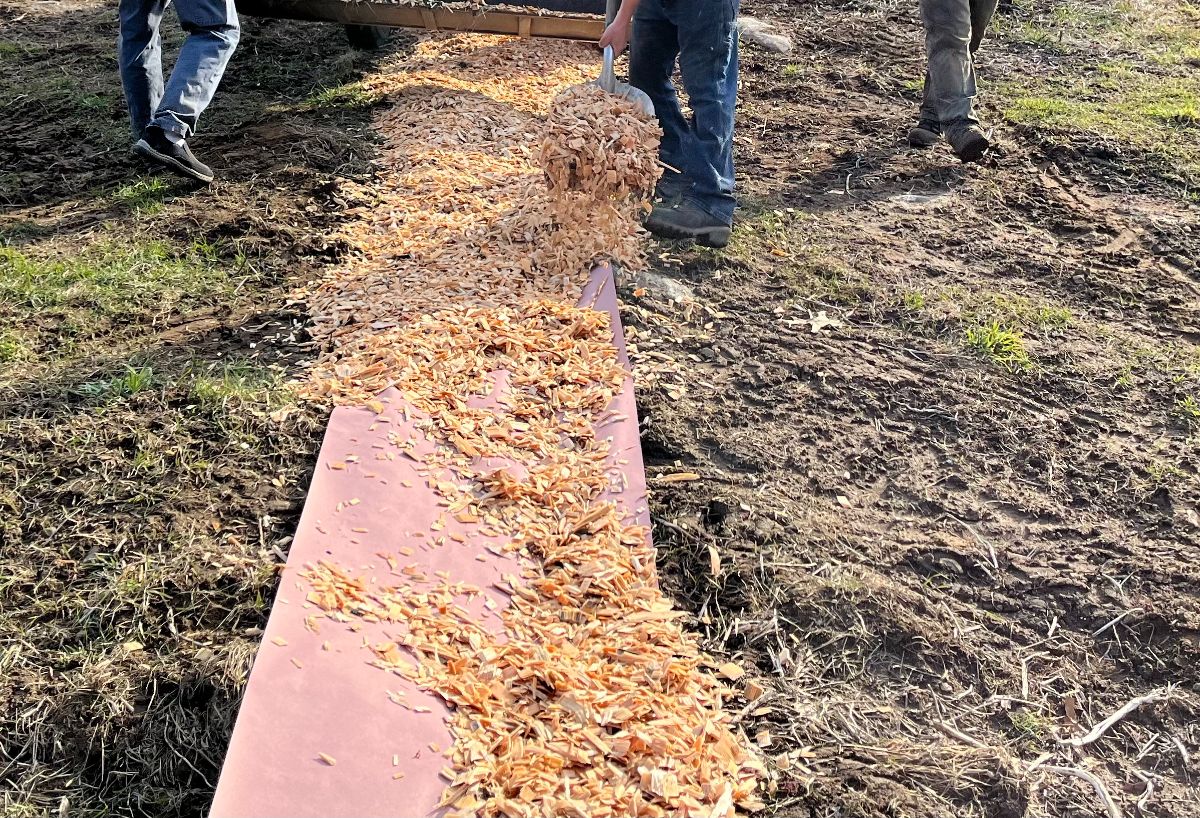
Mulching in and of itself is neither good nor bad. It all depends on how you use it. It depends on your gardening style—will mulch and barrier fabrics be in your way? Will they make your life easier or harder?
Whether mulch is “good” or “bad” also depends on whether it is applied properly, whether it is helpful or harmful to the plants you grow, on your knowledge of the plants and the ecosystem of your garden.
The point here is not to insist that you do or do not use mulch in your garden. It is to tell you that it’s okay not to mulch; to make you aware of some really good reasons not to; to encourage you to consider whether mulch is right for that spot or that plant, and to encourage you to consider how you want to garden and to help you make the best choice for the gardening you are doing.
There are many ways to garden, many styles and methods, most of which are all good—if they’re good for you. Choose accordingly. Choose wisely and enjoy your garden adventures.


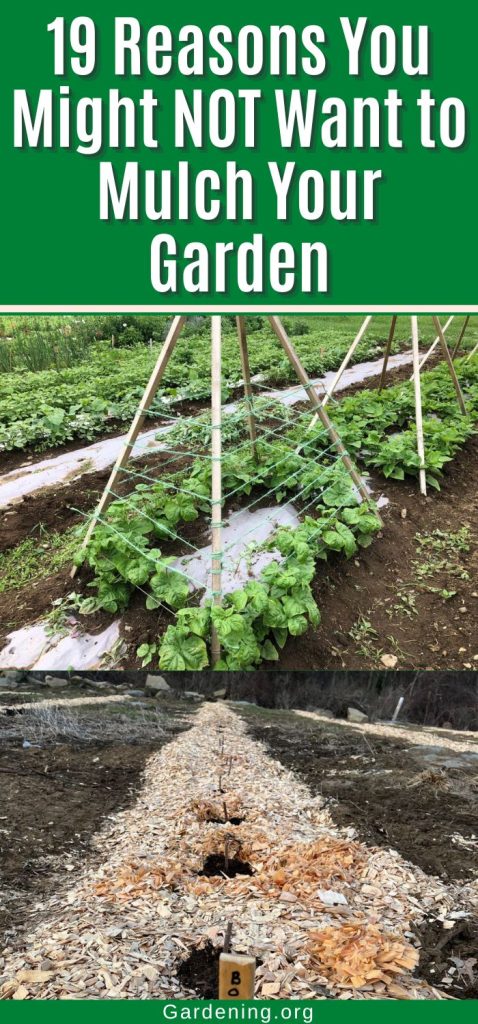
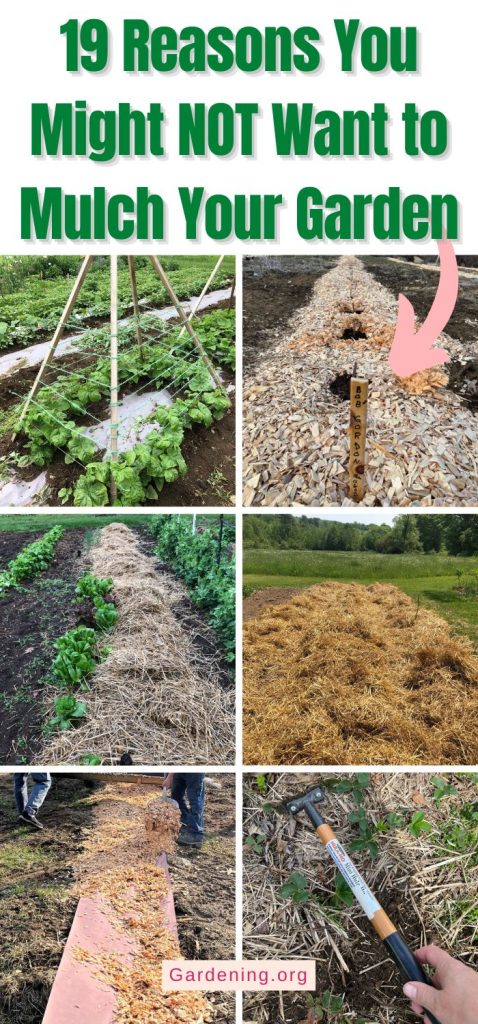
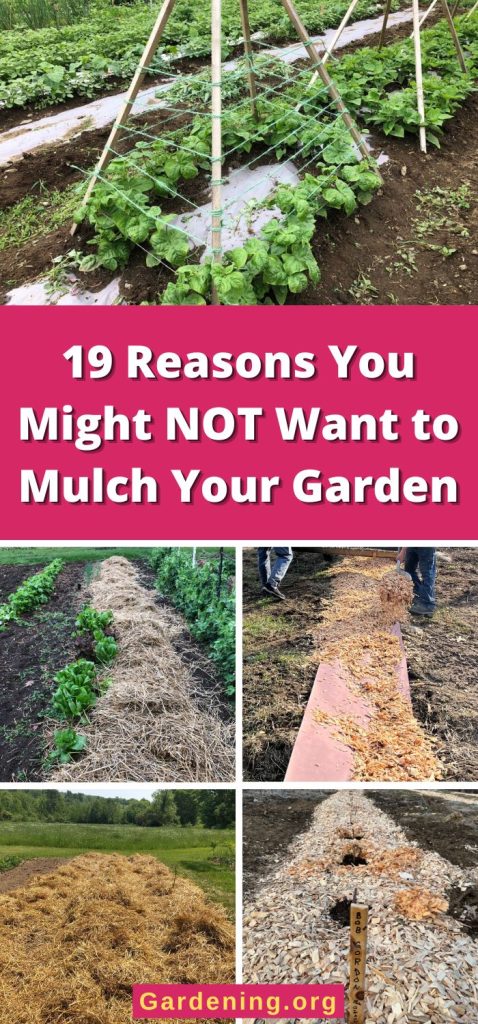
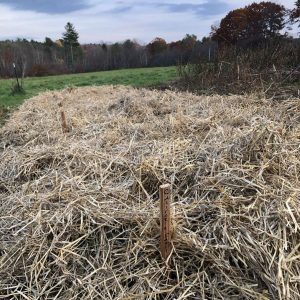
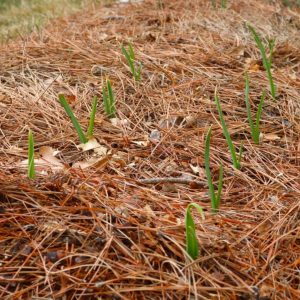
Nellwynne Langley
I put some cardboard around my planted trees (arborvitae trees). They are about 4 years old. I left an area around the drip of the tree to let water go down and fertilize also. Will this prohibit them from growing
Mary Ward
They should be fine. Like you said, you left an area for drop and arborvitae roots are large and will access water from more ground than a typical vegetable or flower plant will.